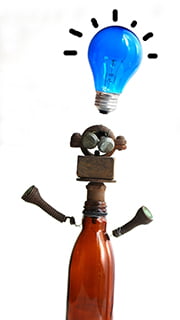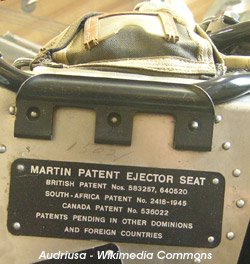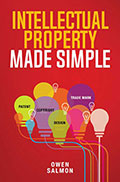Patent an Idea: A Step-by-Step Guide
Did you just shout "Eureka!!"?
You've developed a new invention or you want to patent an idea. The first thing to do is keep quiet. I'm serious - Keep Quiet.
The major requirement for a valid patent is that the invention must be new.
So, if you publish information about your idea, or exploit the invention (i.e. make and sell products) before applying for a patent, it will jeopardize your application.

Technically, you can't patent an idea. Maybe you were lying in bed and thought - wouldn't it be nice to just clap your hands and turn off the lights.
This idea is not what you patent - it is the machine, equipment, software, device etc. that enables this to happen that can be patented.
So, you need to develop the idea into an invention that is workable and then you need to put it all in writing in a patent specification document, before you can patent an idea. We'll get to that in a minute.
Your invention does not necessarily have to have commercial value and does not need to appeal to anyone else. It must just be a device, a machine, a process, a new material, a compound or a method, provided:- It is new;
- It is not just a variation of another known invention;
- It can be used on a practical level in trade or industry or agriculture.
Generally, things like a discovery, scientific theory, mathematical method, scheme for playing a game and a computer program are not patentable. Also, anything likely to encourage immoral or offensive behavior cannot be patented.
The 5 Steps in Patenting:
- Step 1. Develop your Idea
- Step 2. Do a Patent Search
- Step 3. File a Patent Application
The difference between a Provisional (optional) and Final Application - Step 4. File a PCT Application
Optional for International Filing - Step 5. The Patent Prosecution
The examination process by the Patent Office. If granted, you own a patent! - More Patent Answers
How to make money from your invention, protect your rights etc. - Design Patents
- Patent a Plant
- Invention Non-disclosure Agreement
When showing your idea to third parties before filing for registration
We have seen that you cannot patent an idea - you must embody the idea in a workable model, and then you have something to proceed with.
However, that is not the whole story!
This is the Way the Patent System Works to Patent an Idea:
You have the option to file what is called a "provisional" application.
In this you set out the basics of the invention. You do not have to have a full-on prototype of your idea to lodge the application.
However, filing a provisional application gives you the protection (of what you disclose in the specification accompanying that application) so that you can then set about disclosing it - for the purposes of attracting investment, contract manufacturers, etc - and refining the invention.
From the time of the provisional application you have 12 months to get your act together in this way. Then, if you want to get a patent proper, you must complete the application by filing exactly that - a complete specification in which the final product is described in detail.
You can start off by filing a complete specification, but have a look at the advantages of the provisional - it buys you time if you don't have the complete picture finalized, but you want to lift the lid on your invention for the reasons mentioned.
The complete specification cannot increase the scope of the invention referred to in the provisional - well, it can, (as long as it is new) but the additional stuff won't attract the all-important priority date of the provisional.
You see, in order to patent an idea, it's all about first-come first served!
Having said all that, the Complete Specification or Invention Disclosure Document must describe the invention in full with all the specific features and claims for which you want to be granted a patent.

The specification is the description and summary of the invention and in the claims you define actually what it is that you claim protection for.
It is the "claims" that define your weaponry in the event of an infringement.
Sometimes, if applicable, drawings can be attached to the application to further illustrate the invention.
Sidebar:
If your invention came about during the course of your employment with a company, generally, your employer will have the rights to any patents.
The free employment contracts on our site do have an invention clause.
Alternatively you can use the stand-alone Invention and Copyright Assignment Agreement.
Note:
Follow the links at the bottom or our
Intellectual Property Resources page for the Patent Office
in your specific country. Do preliminary searches, download the free legal forms if available and follow their guidelines to patent an idea.
Intellectual Property Made Simple - Recommended Reading
Owen Salmon S.C. has contributed to the content on our site and his book simplifies the nature, creation, and ownership of these different intellectual property rights.
Follow the image link to get your ebook or hard copy - it explains the procedures for registration, and the remedies for enforcement, all in bite-size sections which are easy to read and simple to understand.
If you are confident that you can do it yourself - go ahead. Otherwise use the information you gather to prepare questions for the consultation with your patent attorney.
You are here:



